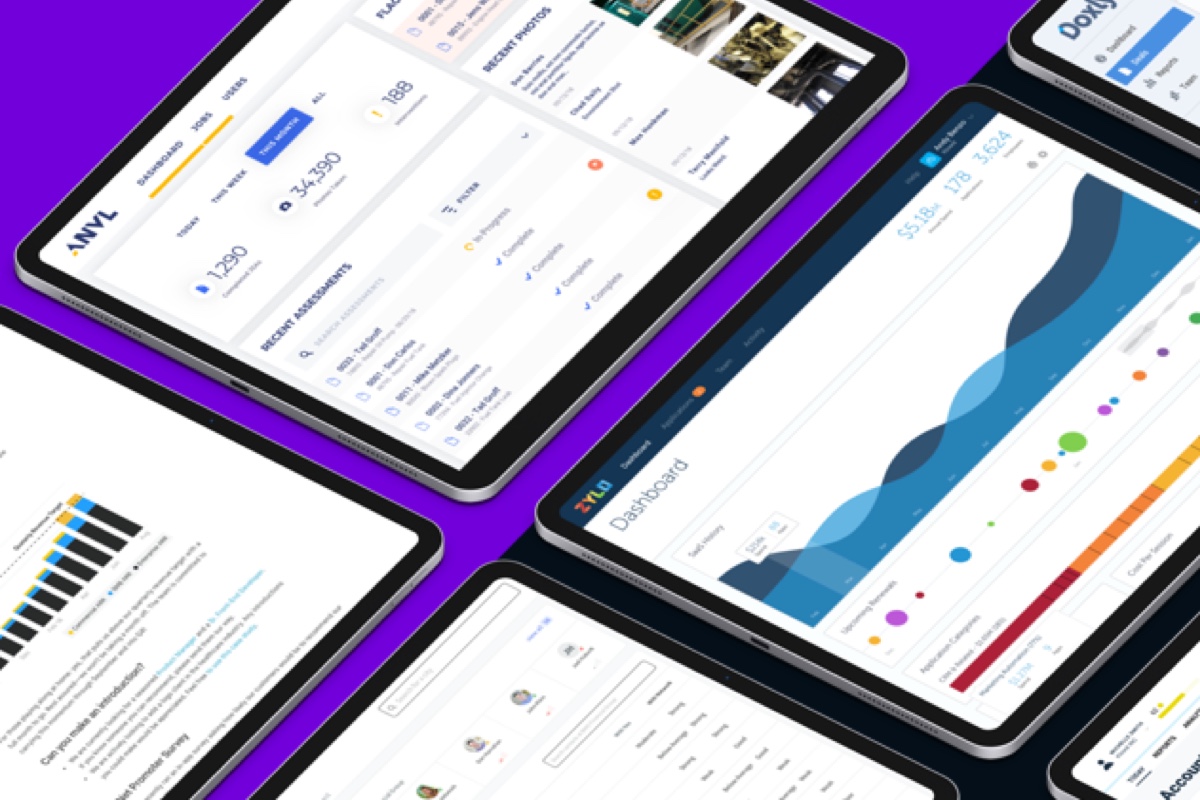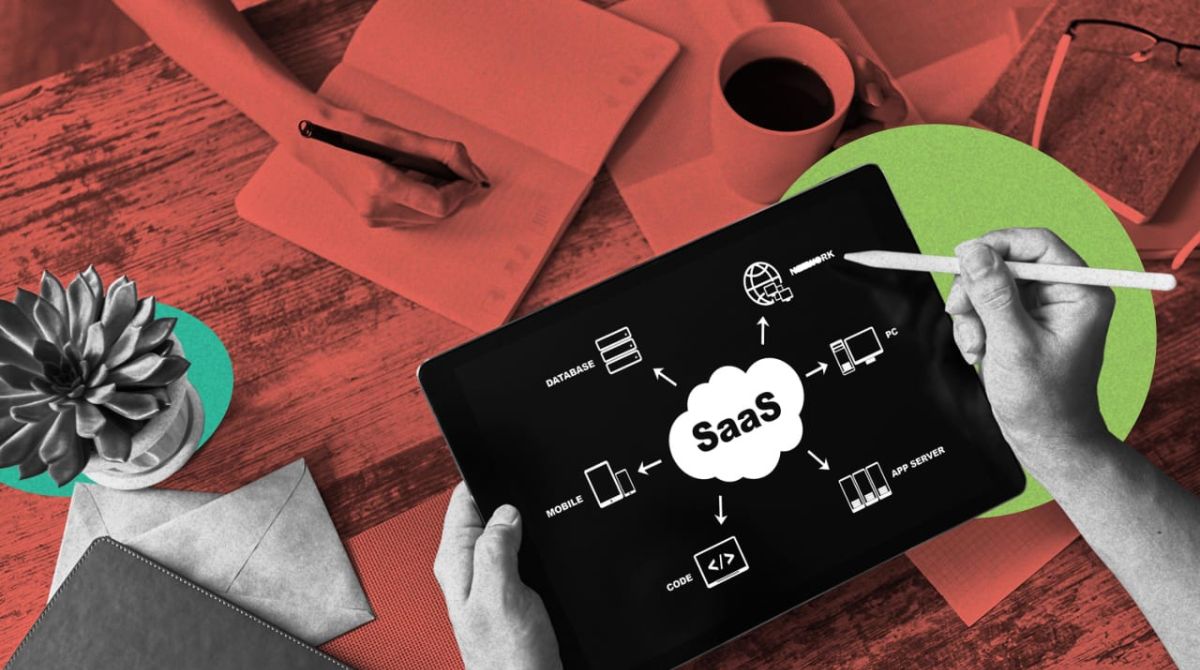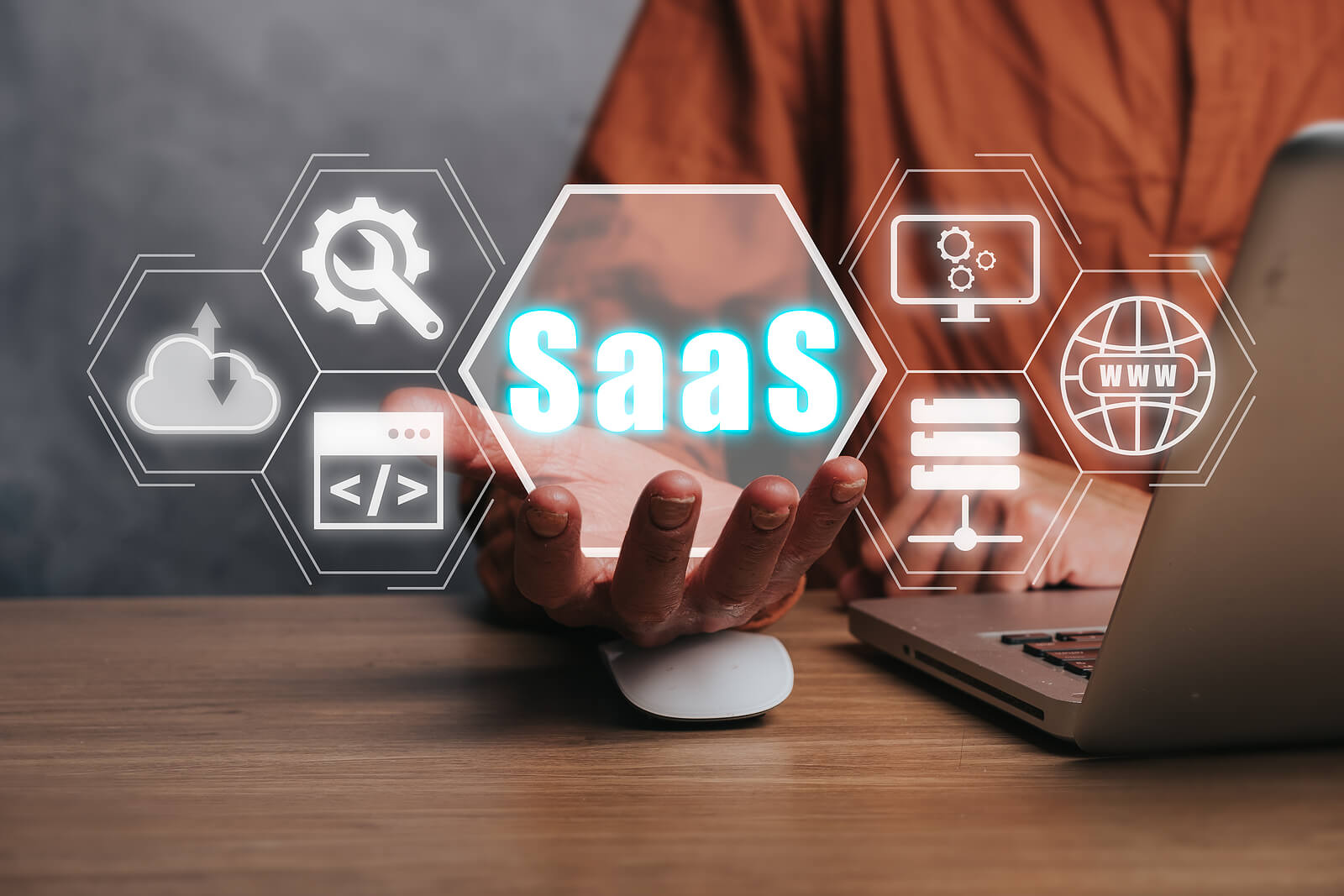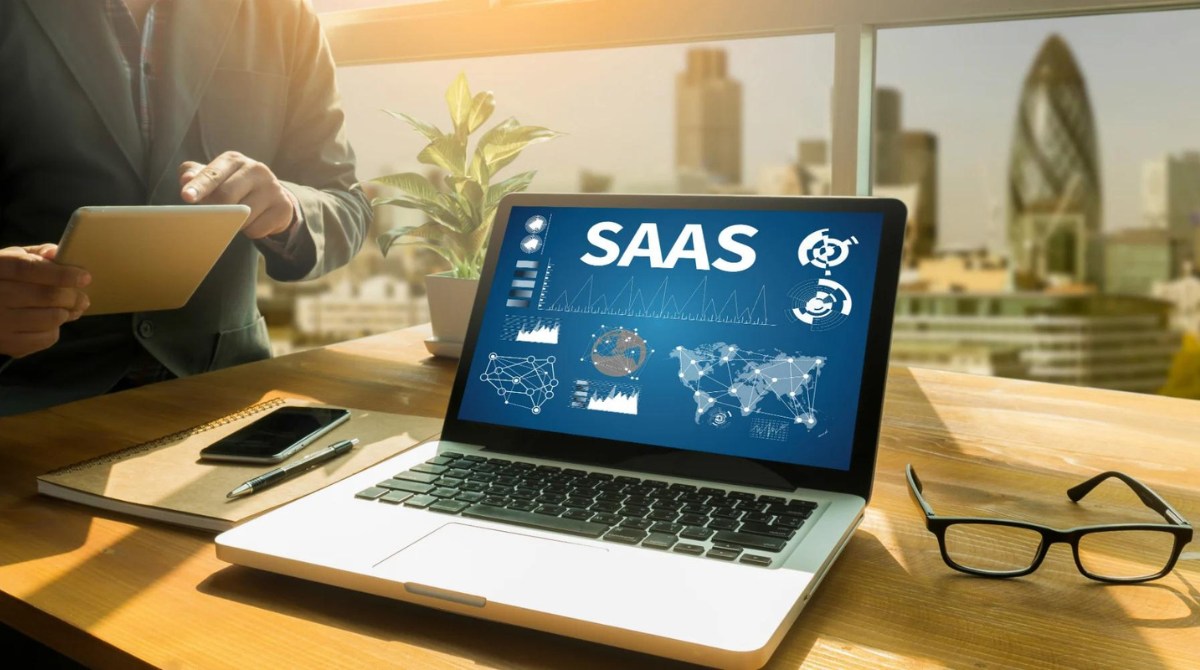Introduction
Welcome to the world of Software as a Service (SaaS) products! In today’s digital age, businesses are increasingly relying on cloud-based solutions to streamline their operations and improve efficiency. SaaS products have gained immense popularity, revolutionizing the way software is delivered, accessed, and utilized by both individuals and organizations.
SaaS can be best defined as a software distribution model where applications are hosted by a service provider and made available to customers over the internet. Unlike traditional software, where users need to install and maintain applications on their own hardware, SaaS products are accessed through web browsers, eliminating the need for complex installations and updates.
This innovative software delivery model not only provides ease of use and accessibility but also offers several key advantages over traditional software solutions. SaaS products ensure seamless collaboration, scalability, and cost-effectiveness, making them an appealing option for businesses of all sizes and industries.
The characteristics of SaaS products set them apart from other software solutions. One of the key characteristics is the multi-tenancy architecture, where a single instance of the software serves multiple customers, ensuring efficient resource utilization. Additionally, SaaS products are typically subscription-based, with customers paying for the software on a recurring basis, which provides greater flexibility and affordability.
SaaS products offer a wide range of benefits that contribute to their growing popularity. For businesses, these products eliminate the need for costly infrastructure investments and maintenance, as all technical aspects are handled by the service provider. Updates and security patches are also automatically applied, ensuring that customers always have access to the latest features and protection.
The variety of SaaS products available today is vast, catering to different needs and industries. From customer relationship management (CRM) systems to project management tools and collaboration platforms, the possibilities are endless. Whether you’re a small business looking to streamline your operations or a large enterprise in need of a scalable solution, there’s likely a SaaS product out there that meets your requirements.
So, how do SaaS products differ from traditional software? The key differentiator lies in their delivery model and the level of ownership and control users have over the software. With SaaS, users don’t need to worry about installation, maintenance, or software updates, as these aspects are taken care of by the service provider. This allows businesses to focus on their core operations and strategic goals, rather than getting caught up in technical complexities.
Definition of SaaS
To fully grasp the concept of Software as a Service (SaaS), it’s essential to understand its definition and how it differs from other software delivery models. SaaS is a cloud computing model in which software applications are delivered over the internet by a service provider to end-users. Instead of installing the software on local servers or individual devices, users access the application through a web browser or dedicated client.
In the traditional software model, users would purchase a license and install the software on their own hardware. This required significant upfront investment and ongoing maintenance to ensure the software’s proper functioning. However, with SaaS, the software is hosted on the provider’s infrastructure, eliminating the need for users to handle installations, updates, and server maintenance.
With SaaS, users typically pay a subscription fee to access the software on a pay-as-you-go basis. This payment structure offers flexibility, allowing businesses to scale their usage based on their needs. Since the software is delivered over the internet, users can access it from anywhere with an internet connection, enabling remote work and collaboration.
A key characteristic of SaaS is its multi-tenancy architecture. This means that a single instance of the software can serve multiple customers, or tenants, simultaneously. Each tenant’s data and configuration are securely isolated from other tenants, ensuring data privacy and security. This multi-tenancy approach optimizes resource utilization and allows service providers to offer cost-effective solutions.
One of the primary advantages of SaaS is its quick deployment and accessibility. Since the software is hosted in the cloud, users can start using it immediately without the need for time-consuming installations. Updates and patches are also applied automatically by the service provider, ensuring that users always have access to the latest features and bug fixes.
SaaS applications span a wide range of industries and functions, from CRM and human resources management to project management, accounting software, and communication tools. The diversity of SaaS products allows businesses to choose solutions tailored to their specific requirements while avoiding the complexity and cost associated with traditional software implementations.
In summary, SaaS provides businesses with a cost-effective and agile way to access and utilize software applications. With its pay-as-you-go model, seamless updates, and remote accessibility, SaaS is transforming the software landscape and empowering businesses to focus on their core objectives.
Key Characteristics of SaaS Products
SaaS products possess several key characteristics that distinguish them from traditional software solutions. Understanding these characteristics is crucial in comprehending the unique benefits and advantages that SaaS brings to businesses. Let’s explore the key attributes of SaaS products:
- Cloud-based Delivery: SaaS products are hosted on the cloud, enabling users to access them through a web browser or specialized client. This eliminates the need for complex installations and hardware setup, making it easy for users to start using the software immediately.
- Subscription-based Pricing: SaaS products typically operate on a subscription-based model, where users pay a recurring fee to access the software. This pay-as-you-go approach provides flexibility and cost-effectiveness, allowing businesses to scale their usage based on their needs.
- Multi-Tenancy Architecture: SaaS products are designed to serve multiple customers, or tenants, within a single instance of the software. Each tenant’s data and configuration are securely segregated to ensure data privacy and security. This multi-tenancy approach maximizes resource utilization and enables service providers to deliver cost-effective solutions.
- Automatic Updates and Maintenance: Service providers are responsible for maintaining and updating the SaaS products. This means that users don’t have to worry about manual installations or applying updates themselves. The software is always up-to-date, incorporating the latest features, security patches, and bug fixes.
- Scalability: As businesses grow, their software needs may change. SaaS products offer the advantage of scalability, allowing users to easily upgrade or downgrade their subscription plans to match their evolving requirements. This flexibility ensures that businesses can adapt their software usage without significant disruptions or additional costs.
- Accessibility and Collaboration: With SaaS, users can access their software applications from anywhere with an internet connection. This enables remote work, facilitating collaboration among dispersed teams. It also ensures that users have access to their data and tools regardless of their location or the device they are using.
These characteristics collectively contribute to the appeal and value proposition of SaaS products. By leveraging cloud-based delivery, subscription-based pricing, and other key features, SaaS products provide businesses with scalability, cost-effectiveness, and effortless maintenance, freeing up resources to focus on core operations and strategic initiatives.
Benefits of SaaS Products
Software as a Service (SaaS) products offer numerous advantages over traditional software solutions. These benefits have contributed to the widespread adoption of SaaS by businesses across various industries. Let’s explore the key advantages of utilizing SaaS products:
- Cost-effectiveness: SaaS products eliminate the need for businesses to invest in costly hardware infrastructure and software licenses. Users pay a subscription fee based on their usage, allowing for predictable costs and avoiding large upfront investments. Additionally, the responsibility for software updates, maintenance, and security lies with the service provider, further reducing operational expenses.
- Scalability and Flexibility: SaaS products provide businesses with the ability to scale their software usage up or down as needed. Whether it’s adding new users, increasing storage capacity, or accessing additional features, scaling with SaaS is seamless and cost-effective. This flexibility allows businesses to adapt their software solutions to their evolving needs, without being burdened by traditional software’s limitations.
- Rapid Deployment: SaaS products eliminate the lengthy deployment processes associated with traditional software. With SaaS, users can quickly access and start using the software through a web browser or dedicated client. This allows businesses to onboard new employees, launch new initiatives, and respond to market demands with greater agility.
- Accessibility and Collaboration: SaaS products enable users to access their software applications from anywhere, at any time, as long as they have an internet connection. This accessibility promotes remote work, empowers distributed teams, and fosters collaboration across geographical boundaries. Multiple users can seamlessly collaborate on projects, access shared data, and communicate in real-time, enhancing productivity and efficiency.
- Automatic Updates and Maintenance: Service providers are responsible for maintaining and updating SaaS products. This means that users always have access to the latest features, security patches, and bug fixes without the need for manual installations or disruptions to their workflow. These automatic updates ensure that the software remains secure, reliable, and up-to-date.
- Integration and Compatibility: SaaS products often offer integrations with other popular business tools and applications, allowing for a seamless workflow between different software systems. This integration capability eliminates the need for manual data entry, reduces errors, and enhances productivity. Additionally, SaaS applications are typically compatible with various devices and operating systems, providing a consistent user experience across platforms.
The above benefits highlight the transformative impact of SaaS products on businesses. From cost savings and scalability to increased accessibility and collaboration, SaaS empowers organizations to leverage innovative software solutions without the burden of complex installations, maintenance, and high upfront costs. By embracing SaaS, businesses can focus on strategic initiatives, enhance productivity, and drive growth in today’s fast-paced, digital landscape.
Different Types of SaaS Products
Software as a Service (SaaS) products span a wide range of applications and cater to diverse business needs. Understanding the different types of SaaS products available is essential for businesses seeking solutions that align with their specific requirements. Let’s explore some common categories of SaaS products:
- Customer Relationship Management (CRM): CRM SaaS products help businesses manage customer interactions, track leads, and streamline sales processes. They provide a centralized platform for storing customer data, managing contacts, and tracking sales opportunities. Examples of popular CRM SaaS products include Salesforce, HubSpot, and Zoho CRM.
- Human Resources Management (HRM): HRM SaaS products assist businesses in managing and automating various HR processes, including employee onboarding, payroll, benefits administration, and performance management. These products help optimize HR operations, enhance employee engagement, and ensure compliance. Examples include BambooHR, Workday, and ADP.
- Project Management: SaaS products in project management facilitate efficient planning, execution, and collaboration on projects. They typically offer features such as task management, team collaboration, progress tracking, and resource allocation. Notable project management SaaS products include Asana, Trello, and Monday.com.
- Collaboration and Communication: Collaboration and communication SaaS products focus on enabling effective teamwork and communication within organizations. These tools provide features like instant messaging, file sharing, video conferencing, and document collaboration. Examples include Slack, Microsoft Teams, and Google Workspace.
- Enterprise Resource Planning (ERP): ERP SaaS products integrate and automate various aspects of business operations, including finance, supply chain management, inventory management, and production planning. These solutions provide a comprehensive view of an organization’s resources and facilitate efficient decision-making. Examples of ERP SaaS products include Oracle NetSuite, SAP Business ByDesign, and Microsoft Dynamics 365.
- Accounting and Finance: SaaS products in accounting and finance streamline financial tasks, such as bookkeeping, invoicing, expense management, and financial reporting. These tools help businesses maintain accurate financial records, ensure compliance, and make informed financial decisions. Popular accounting and finance SaaS products include QuickBooks Online, Xero, and FreshBooks.
These are just a few examples of the diverse range of SaaS products available in the market. Other categories include marketing automation, customer support, e-commerce platforms, supply chain management, and more. Each category caters to specific business functions and requirements, providing businesses with customizable and scalable solutions to streamline operations, enhance productivity, and drive growth.
How SaaS Products are Different from Traditional Software
SaaS (Software as a Service) products have revolutionized the software industry by offering a fundamentally different approach to software delivery and usage compared to traditional software solutions. Understanding the key differences between SaaS and traditional software is crucial in appreciating the unique advantages that SaaS brings to businesses. Let’s explore how SaaS products differ from traditional software:
- Installation and Maintenance: With traditional software, users are responsible for installing the software on their own hardware infrastructure, which often requires technical expertise and can be time-consuming. In contrast, SaaS products are hosted on the provider’s infrastructure. Users can access the software through a web browser or dedicated client without the need for complex installations or hardware setups. Additionally, SaaS products are automatically updated and maintained by the service provider, alleviating users from the burden of manual updates and ensuring the software is always up-to-date and secure.
- Licensing Model: Traditional software often requires users to purchase software licenses upfront, which can be a significant investment. SaaS products operate on a subscription-based model, where users pay a recurring fee to access the software. This pay-as-you-go approach provides businesses with greater flexibility and cost-effectiveness, as they only pay for what they use and can easily scale their usage based on their needs.
- Ownership and Control: Traditional software provides users with full ownership of the software and the associated data. Users have complete control over how the software is installed, configured, and customized. In contrast, SaaS products operate in a shared, multi-tenant environment, where a single instance of the software serves multiple customers. Users do not have direct control over the underlying infrastructure or software configuration. However, SaaS providers ensure proper data segregation and security, granting users access to their own isolated and secured data.
- Accessibility and Collaboration: Traditional software is often tied to specific devices or locations, requiring users to be on-site or use specific hardware to access the software. SaaS products, on the other hand, offer seamless accessibility through web browsers or dedicated clients, allowing users to access the software from anywhere with an internet connection. This accessibility enables remote work, enhances collaboration among distributed teams, and enables real-time sharing of data and documents.
- Scalability and Flexibility: Traditional software implementations can be challenging to scale as businesses grow or change their requirements. Adding or removing users, upgrading hardware, or expanding software functionality can be time-consuming and costly. With SaaS products, scalability is inherent to the cloud-based infrastructure. Businesses can easily scale their usage up or down, add or remove users, and access additional features as needed, without the limitations and constraints of traditional software.
These fundamental differences demonstrate how SaaS products offer businesses a more agile, cost-effective, and accessible solution compared to traditional software. By eliminating the need for complex installations, providing automatic updates and maintenance, offering flexible licensing models, and enabling seamless collaboration, SaaS products empower businesses to focus on their core operations and strategic goals, while enjoying the benefits of innovative software solutions.
Examples of Popular SaaS Products
Software as a Service (SaaS) products have gained significant popularity and have become an integral part of many businesses’ operations. There is a diverse array of SaaS products available in the market, catering to various industries and functions. Here are some examples of popular and widely used SaaS products:
- Salesforce: Salesforce is a leading customer relationship management (CRM) SaaS platform that helps businesses manage their sales, customer interactions, and marketing efforts. It provides features for lead tracking, opportunity management, contact management, and analytics, allowing businesses to streamline their sales processes and drive revenue growth.
- Zoom: Zoom is a video conferencing and collaboration SaaS tool that has gained immense popularity, especially in recent times. It offers high-quality video and audio meetings, screen sharing, chat functionality, and recording capabilities. Zoom has become an essential tool for remote work, enabling seamless communication and collaboration among teams and businesses worldwide.
- Microsoft 365: Microsoft 365 (formerly Office 365) is a suite of productivity tools offered by Microsoft as a SaaS product. It includes popular applications such as Word, Excel, PowerPoint, and Outlook, along with cloud storage, email services, and collaboration features. Microsoft 365 allows businesses to enhance their productivity, facilitate efficient collaboration, and access their files from anywhere with an internet connection.
- Slack: Slack is a team communication and collaboration platform that simplifies and centralizes communication within organizations. It offers channels for different teams or projects, direct messaging, file sharing, integration with other tools, and search functionality. Slack improves team collaboration, reduces email clutter, and enhances productivity by providing a central hub for communication and file sharing.
- Zendesk: Zendesk is a customer service and support SaaS platform that helps businesses manage customer inquiries, tickets, and support requests. It offers features such as ticketing systems, automated responses, knowledge base management, and live chat support. Zendesk ensures efficient and personalized customer support, enabling businesses to provide excellent customer service.
- Shopify: Shopify is a popular e-commerce platform that enables businesses to create and manage their online stores. It provides features for product management, order tracking, payment processing, and customizable storefront designs. Shopify simplifies the process of creating and managing an online business, allowing businesses to reach customers and sell their products online effectively.
These examples highlight the range of SaaS products available, serving various business needs and functions. From CRM and collaboration tools to communication platforms and e-commerce solutions, the diversity of SaaS products allows businesses to choose software that aligns with their specific requirements, regardless of their industry or size.
Considerations when Choosing a SaaS Product
Choosing the right Software as a Service (SaaS) product is a critical decision for businesses. With a wide range of options available, it’s essential to consider several factors to ensure that the selected SaaS product aligns with the unique needs and objectives of the business. Here are some key considerations when choosing a SaaS product:
- Functionality and Features: Evaluate the functionality and features offered by the SaaS product and compare them to your business requirements. Consider if the product offers the necessary features to effectively address your specific needs and if it can scale as your business grows.
- Integration Capabilities: Assess the integration capabilities of the SaaS product with other tools and systems used in your organization. Seamless integration with existing software can enhance workflow efficiency and collaboration among different teams and departments.
- Security and Data Privacy: Examine the security measures implemented by the SaaS provider. Consider factors such as data encryption, access controls, vulnerability management, and compliance with relevant regulations. Ensure that the SaaS product offers the necessary level of security and data privacy to protect your sensitive information.
- Scalability and Flexibility: Determine if the SaaS product can scale and adapt as your business requirements change. Consider aspects such as the ability to add or remove users, upgrade or downgrade subscription plans, and accommodate increased data storage needs. Flexibility is crucial to ensure that the SaaS product can grow with your business.
- Service Level Agreement (SLA): Review the SLA provided by the SaaS provider. It outlines the level of service quality, uptime guarantees, support response times, and issue resolution processes. Ensure the SLA meets your business requirements and aligns with your service expectations.
- Data Backup and Recovery: Understand the data backup and recovery mechanisms employed by the SaaS provider. Determine if the SaaS product provides regular data backups, disaster recovery plans, and data restoration processes to safeguard your information in the event of unexpected data loss or system failures.
- User Interface and Usability: Assess the user interface and overall usability of the SaaS product. A user-friendly interface and intuitive navigation can significantly impact user adoption and productivity. Consider conducting user trials or seeking user feedback to evaluate the product’s ease of use.
- Pricing Structure: Understand the pricing structure of the SaaS product, including subscription plans, additional costs for advanced features, and any potential price increases. Ensure that the pricing aligns with your budgetary constraints and offers a fair value proposition based on the product’s features and functionality.
- Customer Support: Evaluate the level of customer support provided by the SaaS provider. Consider factors such as support channels (email, chat, phone), availability of technical resources, and response times. Strong customer support ensures timely assistance and issue resolution when needed.
By carefully considering these factors, businesses can make an informed decision when choosing a SaaS product that best meets their unique requirements. A thorough evaluation of functionality, integration capabilities, security measures, scalability, and other considerations ensures that the chosen SaaS product not only enhances operational efficiency but also aligns with long-term business goals and objectives.
Conclusion
Software as a Service (SaaS) has significantly transformed the way businesses access and utilize software applications. With its cloud-based delivery model, subscription-based pricing, and numerous benefits, SaaS has become a popular choice for organizations across industries and sizes.
In this article, we explored the definition of SaaS and discussed its key characteristics. We examined the benefits that SaaS products offer, such as cost-effectiveness, scalability, accessibility, and automatic updates. We also delved into the different types of SaaS products, including CRM, project management, collaboration, and accounting software, to name just a few.
Additionally, we highlighted the differences between SaaS products and traditional software, emphasizing the advantages that come with cloud-based accessibility, automatic updates, and the scalability of SaaS solutions.
Moreover, we provided examples of popular SaaS products, showcasing their diverse functionalities and industry applications. These examples exemplify the versatility and broad range of SaaS offerings available in the market.
Lastly, we discussed important considerations to keep in mind when selecting a SaaS product. Evaluating factors such as functionality, integration capabilities, security measures, scalability, and pricing can help businesses make an informed decision that aligns with their specific needs and goals.
In conclusion, SaaS products have revolutionized the software landscape by providing businesses with flexible, scalable, and cost-effective solutions. By leveraging the power of the cloud, SaaS enables organizations to streamline operations, enhance collaboration, and adapt to evolving business requirements in today’s fast-paced digital world.

























